Thessaloniki
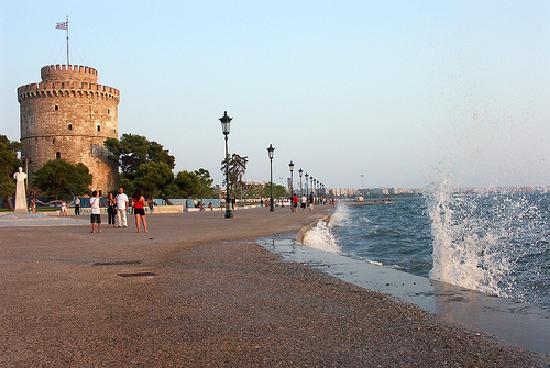 Thessaloniki (aka Salonica), in the district of Macedonia, is, at about a million inhabitants, the second largest city in Greece. More importantly, it is a city with a continuous 2500-year history, preserving relics of its Hellenic, Roman, Byzantine and Ottoman past and of its formerly dominant Jewish population. Its Byzantine churches, in particular, are included in UNESCO's World Heritage list.
Thessaloniki (aka Salonica), in the district of Macedonia, is, at about a million inhabitants, the second largest city in Greece. More importantly, it is a city with a continuous 2500-year history, preserving relics of its Hellenic, Roman, Byzantine and Ottoman past and of its formerly dominant Jewish population. Its Byzantine churches, in particular, are included in UNESCO's World Heritage list.
The city of Thessaloniki was founded in 316 B.C. on a site of old prehistoric settlements dating back to 2300 B.C., by Cassander, king of Macedonia, and was named after his wife, sister of Alexander the Great. During the Byzantine era, it was the second city after Constantinople, remaining so until its capture by Saracens in 904. It was restored to the empire in 1246, reaching a cultural “Golden Age” until Ottoman conquest and occupation in 1430. Until just a few decades ago the city’s population was mixed as any in the Balkans. Besides the Ottomans, who had been in occupation for close on five centuries (and even Mustafa Kemal Pascha, today known as Kemal Atatürk was born here), there were Slavs, Albabians and the largest European Jewish community of the period. A great fire in August 1917 burned down most of the city. The character and complexity of the city changed almost overnight, the result today being a modern Greek Metropolis built according to the avenue scheme of a French architect in 1920. Most of Thessaloniki’s Jewish population was deported to the concentration camps when the city (and the rest of Greece) was occupied by the Nazis.
Situated on the shores of the Thermaikos Gulf, Thessaloniki is divided in a modern area and the old town where most of the sights are. In the old town there are the Byzantine churches and the buidlings you are looking for. They are what Thessaloniki is famous for. You can get glimpses of “Old Salonica” in the walled Kastra quarter of the city, on the hillside beyond the modern grid of streets. In the modern areas you will find examples of recent architecture, that are interesting enough if you are into that kind of thing. Thessaloniki’s next major innovation, the long-promised metro, is currently being dug along Egnatia. Peering into the trenches there beside the sidewalk reveals much older layers of Thessaloniki just beneath the surface. You can also read an interesting article about the 'ghosts' of Thessaloniki.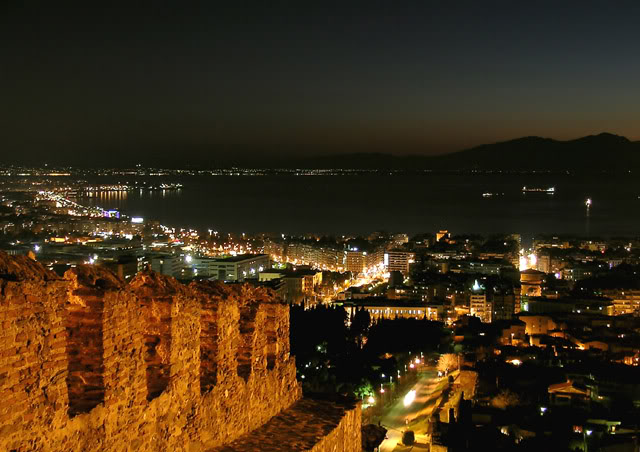
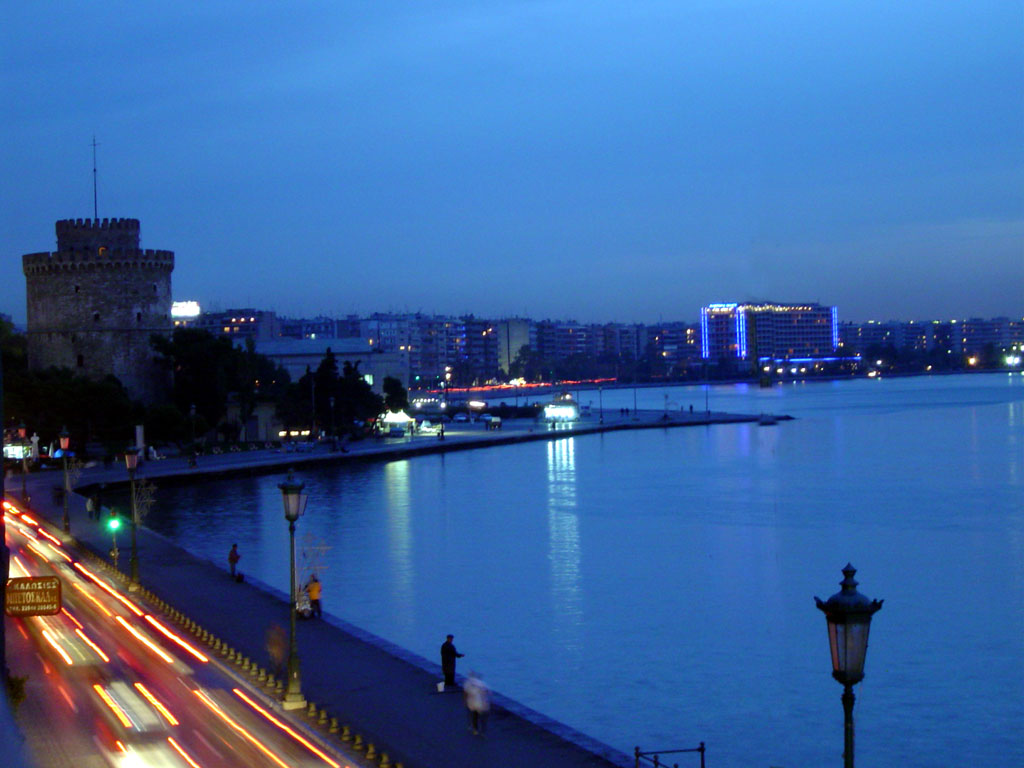
Thessaloniki lets you indulge in fine food, sinful sweets, ultra-chic shopping, an energetic nightlife and more concerts, parties, art shows and events than you can keep track of. What really enhances Thessaloniki’s hip atmosphere, however, are the enduring symbols of its glorious history, from the White Tower on its café-lined waterfront all the way up to the Byzantine walls, just above the Upper Town (Ano Poli), an enchanting neighbourhood of pretty traditional houses set on winding, peaceful alleyways. Down from them are impressive constructions like the 4th-century Church of Agios Dimitrios, the enormous Roman Rotunda, and the sculpted Arch of Galerius in Kamara, thronged with students from Thessaloniki’s universities.
The Aristotle University of Thessaloniki is the largest university in Greece. The University Campus covers some 23 hectares close to the centre of Thessaloniki. It comprises 7 Faculties organized into 33 Schools, 5 faculties with only 1 school each, as well as 4 independent Schools (a total of 42 Schools).
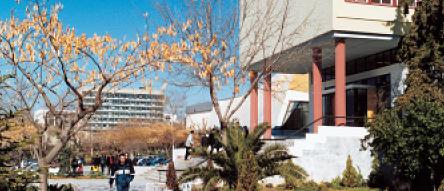


How to get in
Thessaloniki's international airport, called "Makedonia", is connected to the major European cities as well as to Athens and to many flights to Aegean and Ionian islands.
The city is also connected to all the major Greek cities by frequent bus services that run from the coach station.
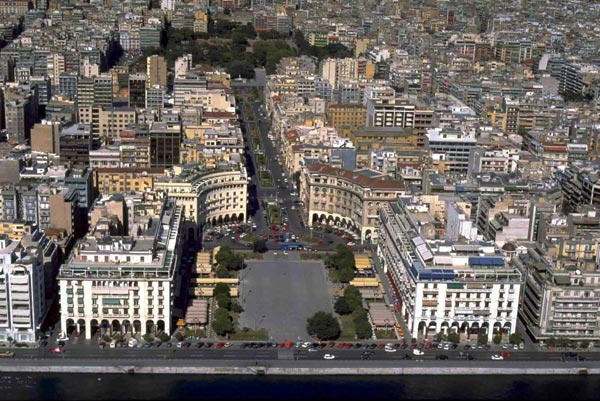 The intercity train service connects Thessaloniki to Athens (approx. 5 hours).
The intercity train service connects Thessaloniki to Athens (approx. 5 hours).
Connection to the City Centre
The city bus company (OASTH), which provides frequent bus services to all parts of the city, operates also bus number 78, a 24h bus service which shuttles between airport-coach-train station via the city centre. Frequency is between 15 minutes and 30 minutes during the day, while at night, the bus number changes to 78N and runs every 30 minutes.
A ticket costs € 1.00 if you buy it from the kiosk (€ 1.20 if you buy it from the automatic ticket vendor, exact change needed). It's about a 25 minute ride from the airport to the centre.
Thessaloniki sightseeing
 The northernmost Byzantine walls of the city and parts of the western walls are still standing, as is the city's symbol - the White Tower,
The northernmost Byzantine walls of the city and parts of the western walls are still standing, as is the city's symbol - the White Tower,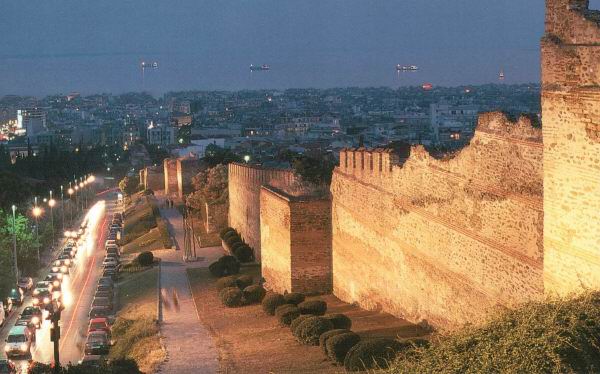
one of the 16th c. AD fortified towers - which is the only surviving tower on the seafront. The rest of the walls are in the picturesque old town (Upper Town) which offers a spectacular view over the bay, especially in the late afternoon. Take a walk along the enormous seafront promenade (about 12 km altogether) with views of the amphitheatrically-built city and enjoy the sunset. See the Archaeological Museum, the new award-winning Museum of Byzantine Culture (2005- the best Museum of Europe), the Roman Forum excavations.
Visit the upper town for its traditional old houses, small cobbled streets, Byzantine citadel, the Eptapyrgion fort.
The city is also known as "the mother of Israel", due to the once flourishing jewish community here, which existed from the Roman period and grew after the Ottoman Empire took in the refugees from Spain (Sephardis), until World War II when most of the city's Jews were transported to Auschwitz, never to return. However, there are still two Synagogues, and you can see the Jewish Museum.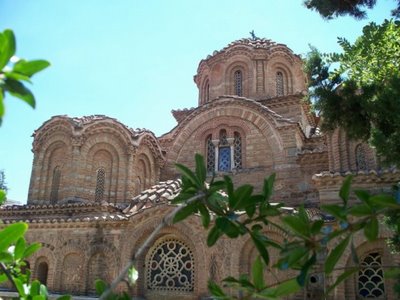
On no account should you miss the Byzantine churches built between the 5th and 14th century ACE, such as St Demetrios, (7th c. ACE) and Agia Sophia (Holy Wisdome, 9th c. ACE), and many lovely smaller ones in the upper town (St Nicolaos Orfanos is particularly worth a look for its frescoes), which are on the UNESCO World Heritage List. One of them, the Rotonda, started life as a Roman temple of Zeus, built by ceasar Galerius, and is almost as old as the Pantheon in Rome. Next to the Rotonda, see the Arch of Triumph of Galerius and the ruins of his palace.
Also interesting are the Turkish public baths, the Bezesteni (Ottoman closed market for jewellery and precious materials) the Alatza Imaret (Ottoman poorhouse) and Hamza Bey Camii (both restored and used for exhibitions).
The traditional central food market, with hundreds of stalls selling meat, fish, fruit, vegetables (sometimes cheek-by-jowl, an unnerving experience for North Americans), cheap clothes and shoes, flowers, herbs and spices, between Aristotelous Square and Venizelou street.
Click here for a virtual tour of Thessaloniki ![]()
Museums and Galleries
The museums of Thessaloniki reveal the rich history of the area and are connected by a special Bus (No 50):
- Thessaloniki Archaeological Museum
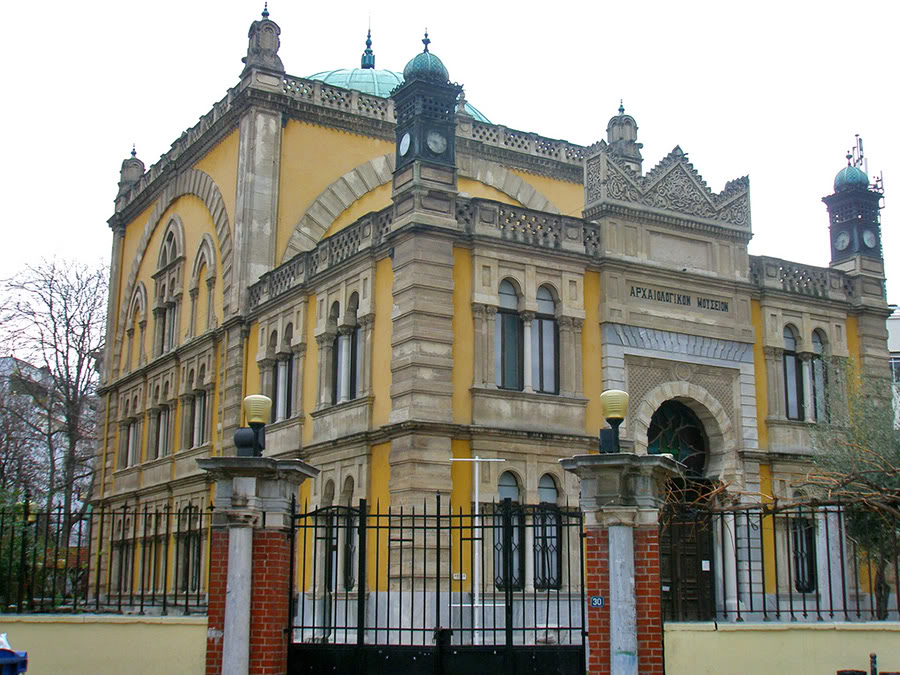
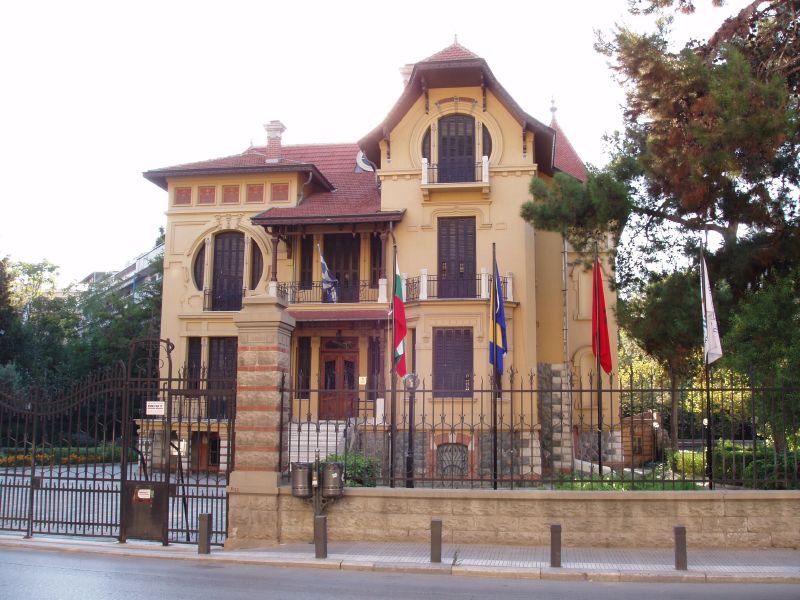
- The Museum of Byzantine Culture
- Museum at the White Tower
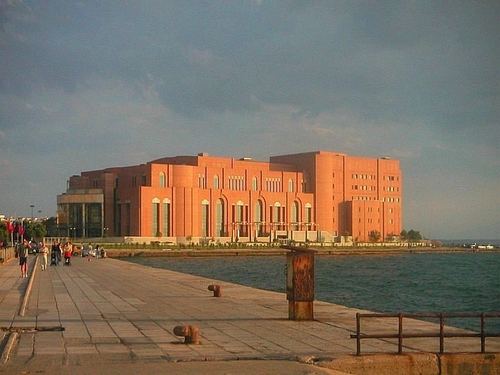
- State Museum of Contemporary Art
- Macedonian Museum of Contemporary Art
- Teloglion Foundation of Art
- Jewish Museum
- Folklore and Ethnological Museum of Macedonia and Thrace
- Ataturk House
What to taste
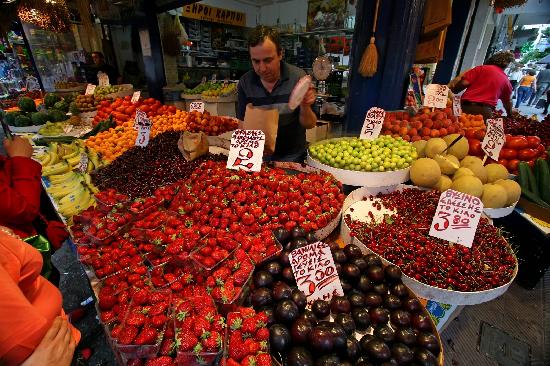 Other Greeks consider Thessaloniki a gourmet city - but bear in mind that this refers to the excellent local specialities and cheap-and-cheerful ouzo taverns rather than to haute cuisine or a range of foreign restaurants. The latter are best avoided in Thessaloniki.
Other Greeks consider Thessaloniki a gourmet city - but bear in mind that this refers to the excellent local specialities and cheap-and-cheerful ouzo taverns rather than to haute cuisine or a range of foreign restaurants. The latter are best avoided in Thessaloniki.
For a morning or late-night snack, try Bougatsa pies: cream (sweet) or cheese (savoury) filling. For a carnivore's treat, try soutzoukakia: minced meat pellets either grilled (at the central market or rotisseries) and topped with with chilli pepper flakes, or in tomato and cumin sauce (Smyrna-style).
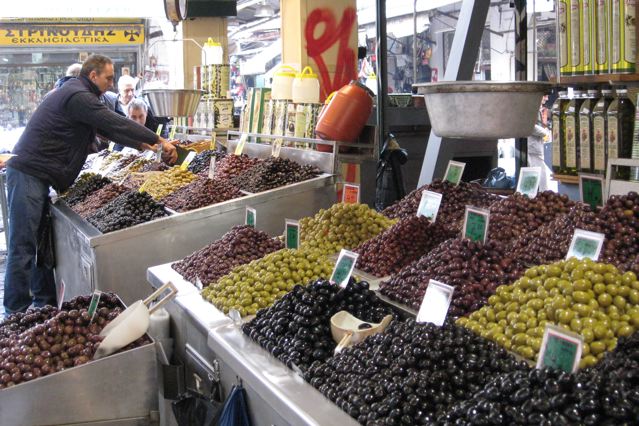 Go for a meal in one of the many downtown ouzo restaurants (ouzeri), taverns or fish restaurants. Accompany your ouzo or tsipouro with a battery of small dishes (mezedes) - by far the best way to eat in Thessaloniki. Traditional fast food include gyros (pork meat), souvlaki or soutzoukaki (meat balls) offered in many stores.
Go for a meal in one of the many downtown ouzo restaurants (ouzeri), taverns or fish restaurants. Accompany your ouzo or tsipouro with a battery of small dishes (mezedes) - by far the best way to eat in Thessaloniki. Traditional fast food include gyros (pork meat), souvlaki or soutzoukaki (meat balls) offered in many stores.
Thessaloniki is by far the liveliest city in Northern Greece- maybe even the whole country. Most of the trendy bars at the old seafront (Nikis ave.) and around, many of the taverns are either downtown or in the old city(kastra). If you will be in town during summer, take a ride on the floating bars plying the harbour. They leave from the White Tower area for a small trip (30') in the Gulf of Thessaloniki in the evening. They play mostly ethnic and alternative foreign music.
Excursions
- Visit to the tomb of Philippe II (father of Alexander the Great) at Vergina (half-day tour).
- Visit to the ancient city of Dion at the foot of Mt Olympos (half-day tour).
- Sail around Mt Athos (Holy Mountain) for a different experience (whole-day tour). Mt. Athos is a monastic community, which was formally founded in 963. Politically, the peninsula is essentially self-governed. It consists of 20 main monasteries plus the capital city and administrative centre, Karyes, which is also home to a Greek governor. In order to reduce temptation, women, beardless boys and eunuchs are completely barred from the peninsula. However, cruises around the peninsula are available to all, providing both men and women a glimpse into the secluded life of the monks of Mt. Athos.
- Some 70 Km to the Southeast lies Halkidiki, a peninsula with some of the best beaches in Greece. Thessaloniki is also the start point for any Halkidiki exploration.
Interesting links for Halkidiki: